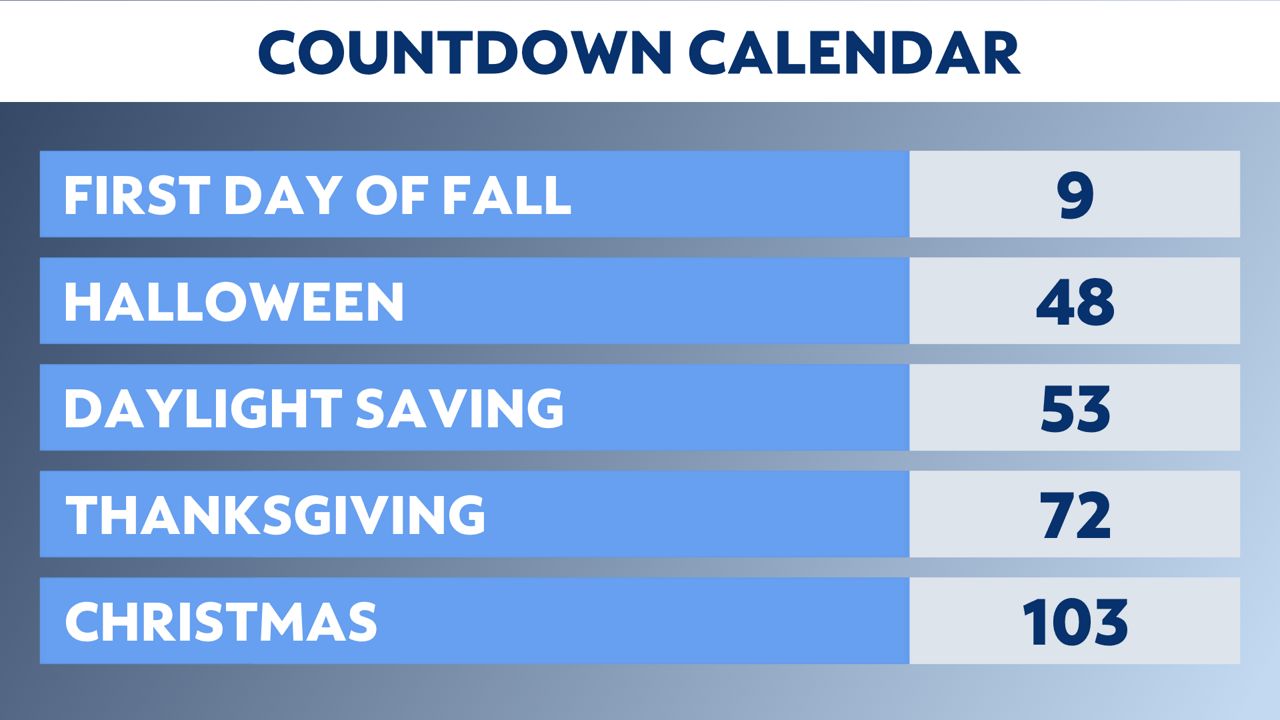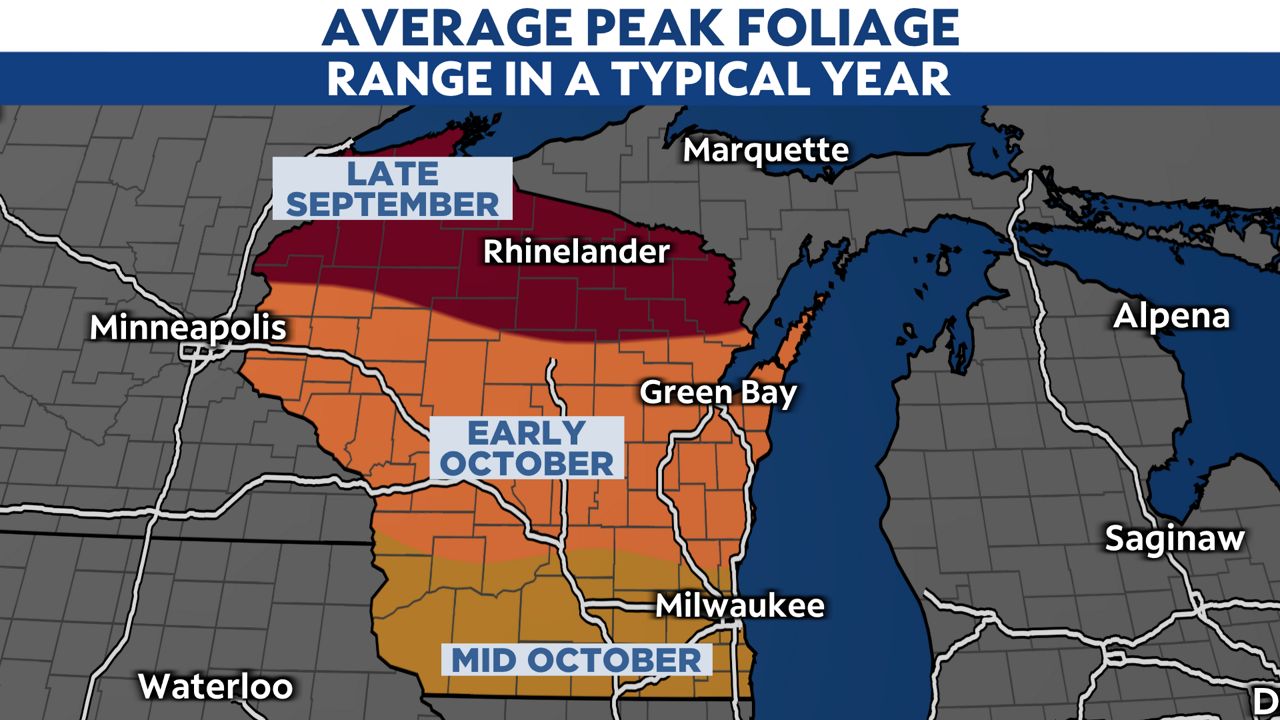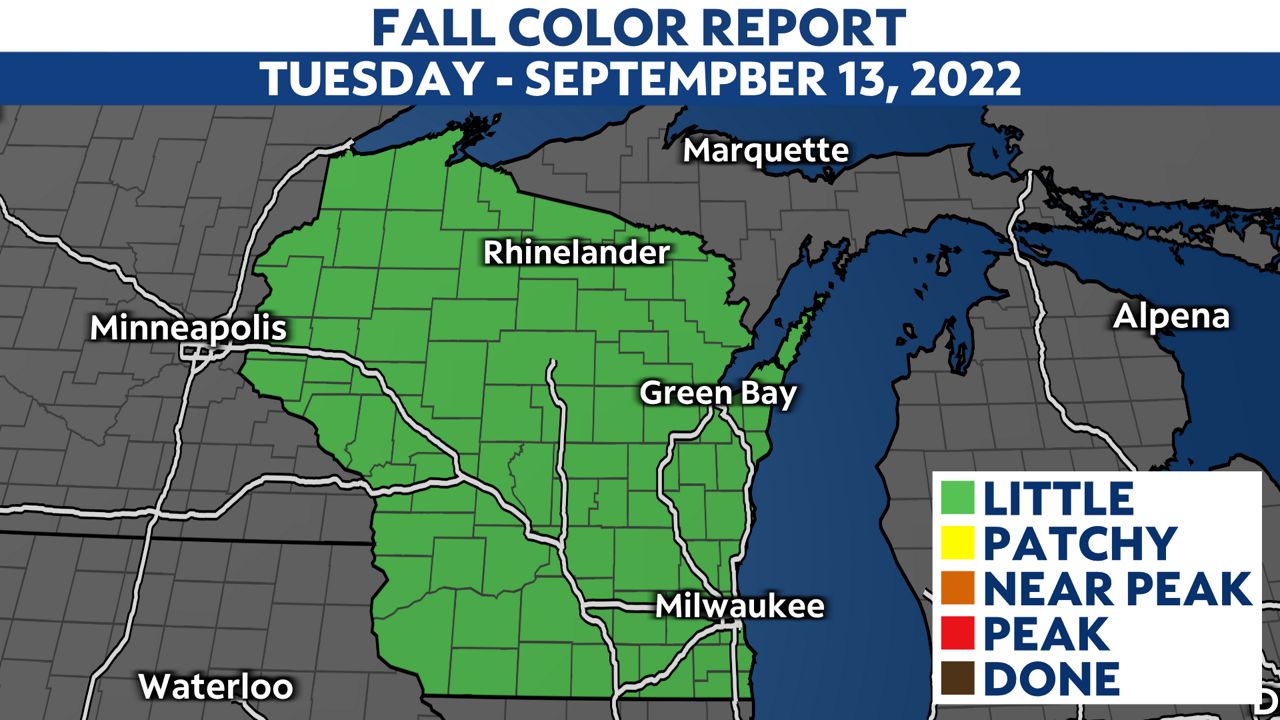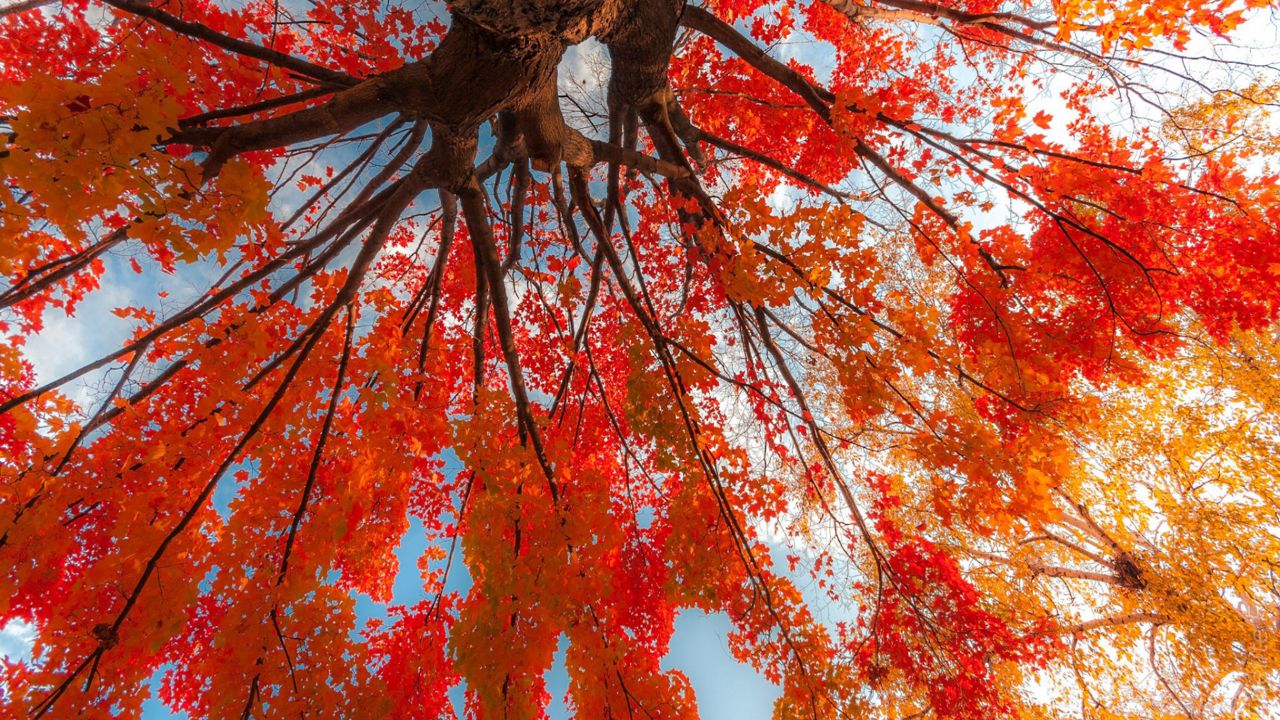Fall has not started, but we are already seeing signs of the season. People are busting out the flannels and drinking anything pumpkin.
The autumn equinox begins on Thursday, Sept. 22. That's just a mere nine days away. The autumn clock is ticking and the days are numbered.

Even though the next several days will be mild, the temperatures will soon turn cooler. The nights will become cold and crisp. That means the brilliant colors of red, orange and yellow will soon electrify our local trees.
If you want to catch the fall foliage at its pinnacle, you need to plan those weekend excursions. Wisconsin will probably hit its peak within the next six weeks.

On average, extreme northern Wisconsin witnesses the peak of fall colors during the last week of September or the first two weeks of October.
The summit for central Wisconsin arrives shortly after and happens during the first two weeks of October. The best days for witnessing the colors will be around the 7th to the 10th of October.
The southern half of the state will usually reach its peak by mid-to-late October. Normally, the height of colors will hit around the 15th or slightly after.
Not every year is the same. Scientists calculate most estimates from seasonal temperatures and average rainfall.
According to the United States Department of Agriculture (USDA), "a late spring, or a severe summer drought, can delay the onset of fall colors by a few weeks. A warm period during fall will also lower the intensity of autumn colors. A warm wet spring, favorable summer weather, and warm sunny fall days with cool nights should produce the most brilliant autumn colors."

As of today, most trees remain green. However, we have received reports throughout the state of some spotty color. It is mainly a few branches along with a few tree tops.
If you'd like to keep up with the changing leaves, utilize the "Fall Color Report" from the Travel Wisconsin website. The website does an excellent job updating the percentage of color for all counties across the state.

A color palette needs pigments, and there are three types involved in autumn color:
- Carotenoids: Produces yellow, orange and brown colors in such things as corn, carrots and daffodils, as well as rutabagas, buttercups and bananas.
- Anthocyanin: Gives color to such familiar things as cranberries, red apples, concord grapes, blueberries, cherries, strawberries and plums. They are water soluble and appear in the watery liquid of leaf cells.
- Chlorophyll: Gives leaves a basic green color. It is necessary for photosynthesis, the chemical reaction that enables plants to use sunlight to manufacture sugars for food.
Certain colors are characteristic of particular species:
- Oaks: Red, brown or russet
- Hickories: Golden bronze
- Aspen and yellow-poplar: Golden yellow
- Dogwood: Purplish red
- Beech: Light tan
- Sourwood and black tupelo: Crimson
- Red maple: Brilliant scarlet
- Sugar maple: Orange-red
- Black maple: Glowing yellow
- Striped maple: Almost colorless
This information is from the USDA.
Our team of meteorologists dives deep into the science of weather and breaks down timely weather data and information. To view more weather and climate stories, check out our weather blogs section.



